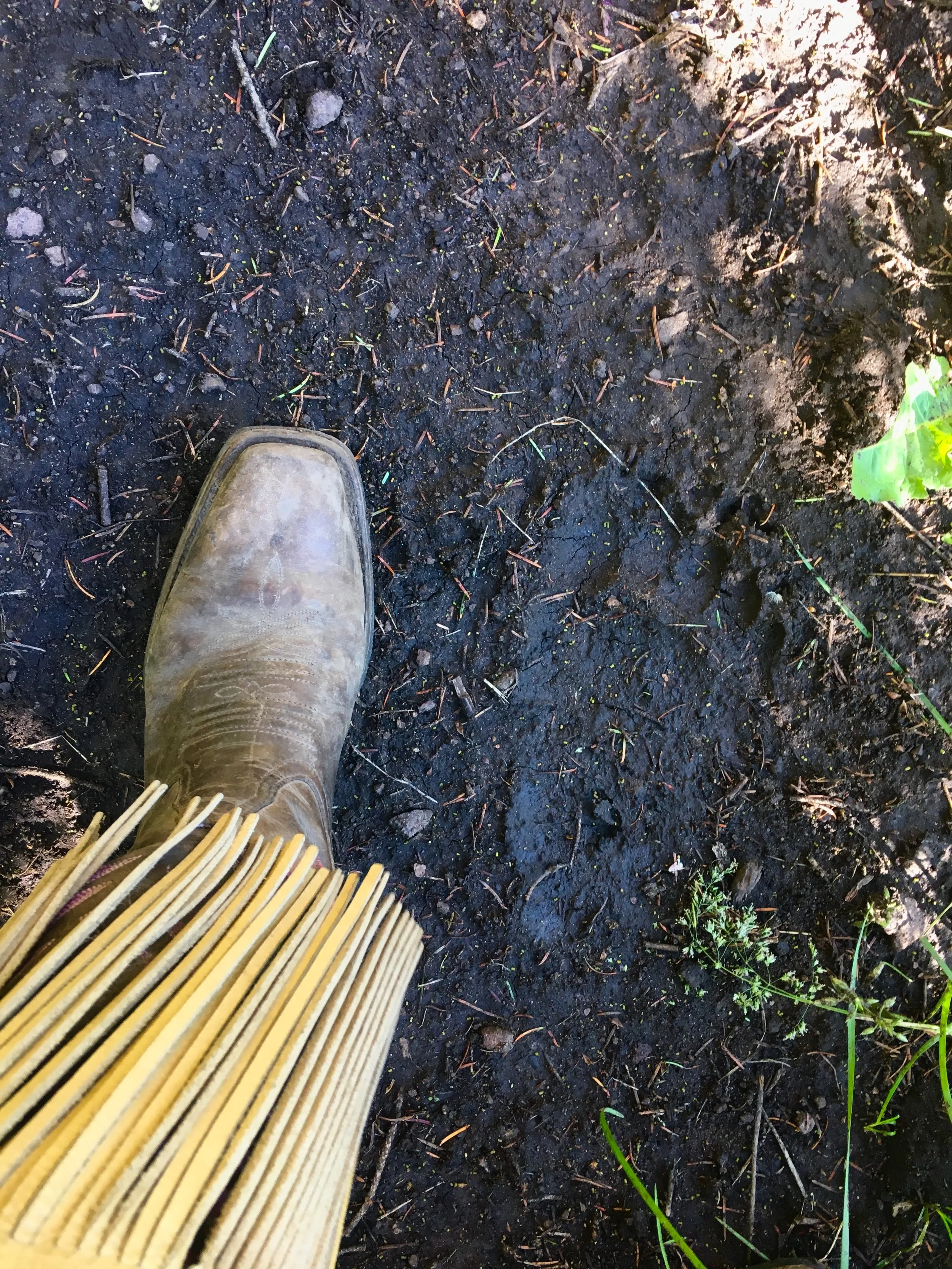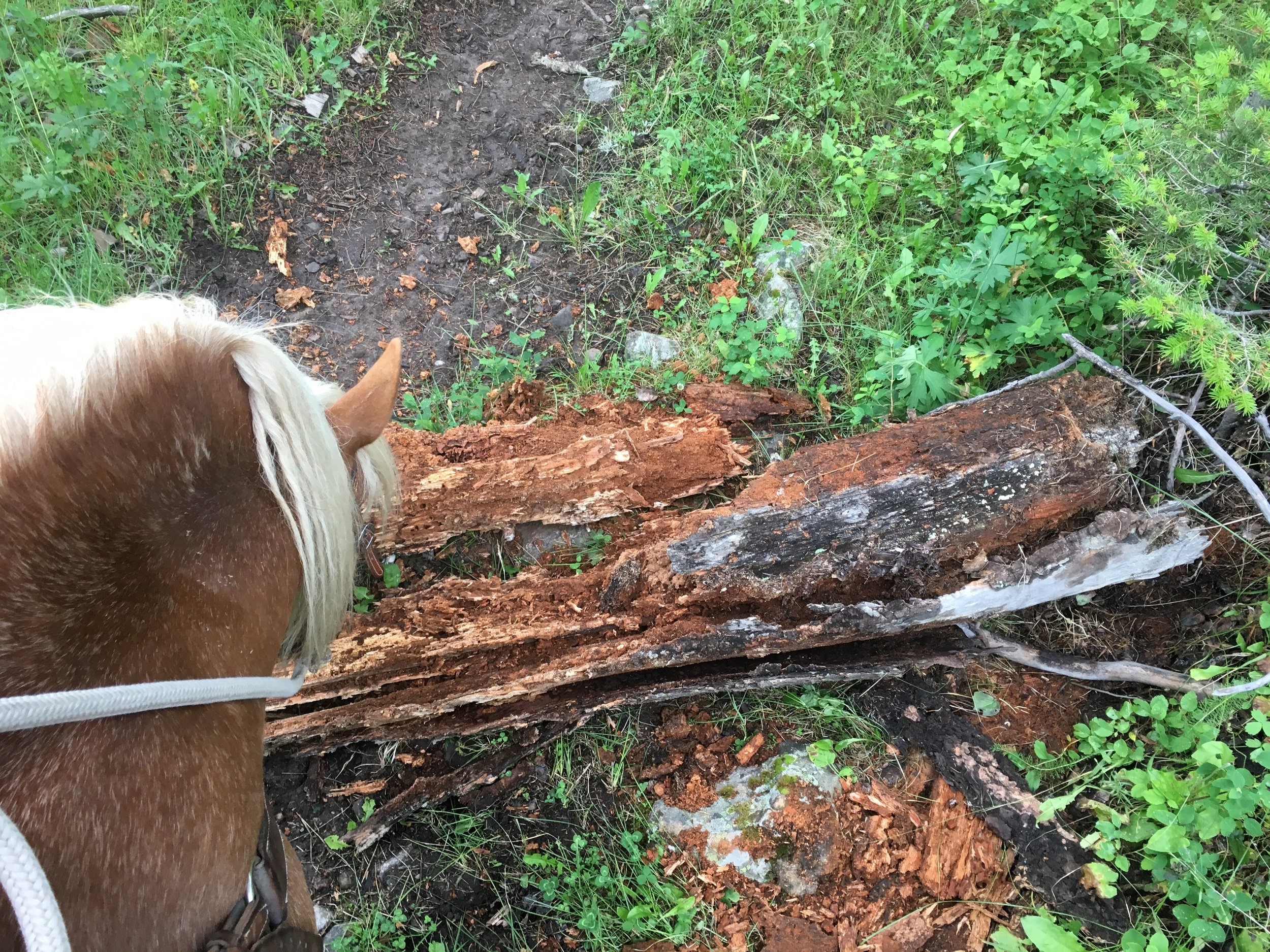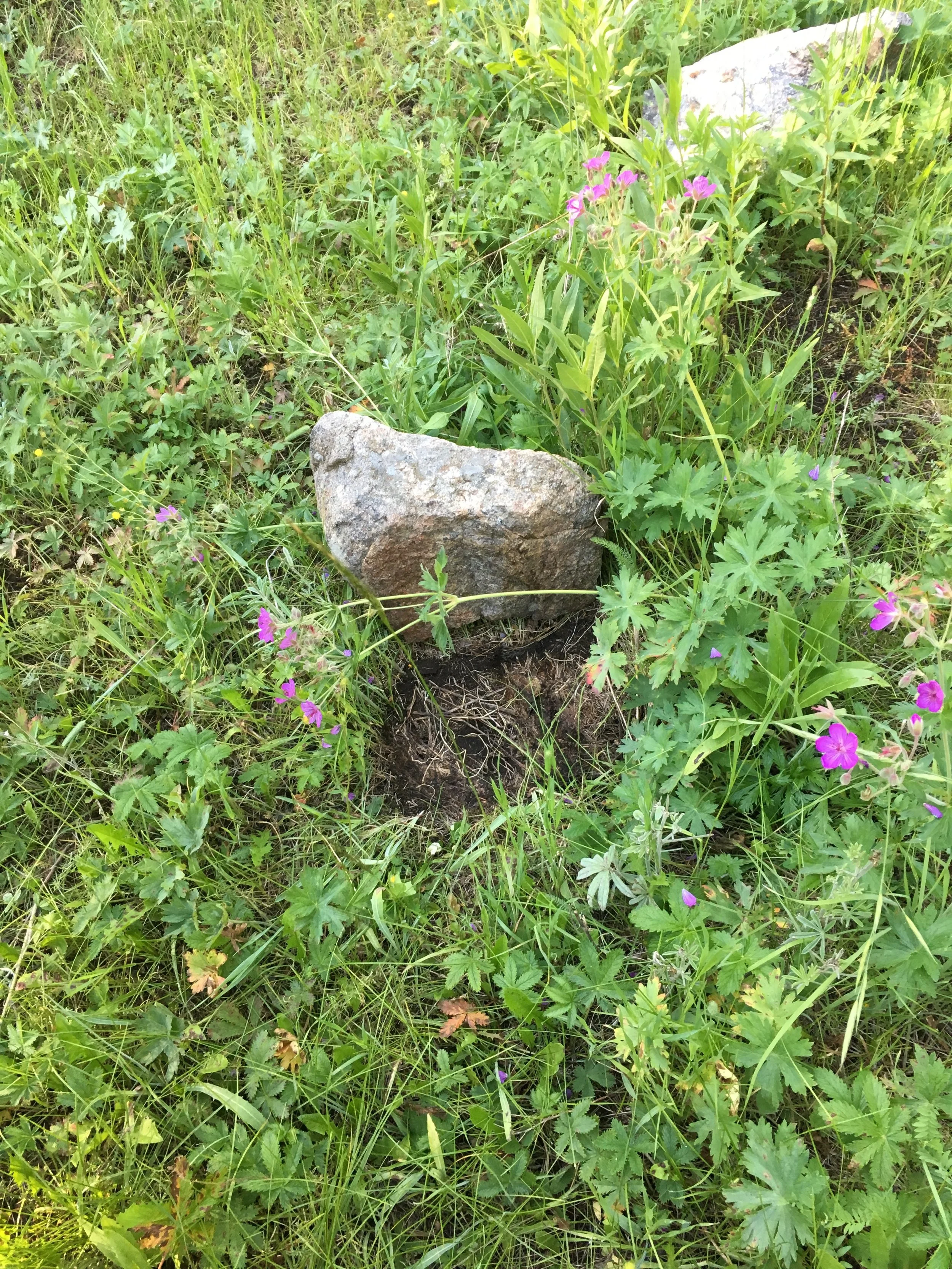On Monday, July 15th it was pretty quiet in the permit areas that I monitor. What I refer to sign in these posts is a reference to any sign of wildlife presence which can include feeding areas, tracks, or simply scat. I did not see too much sign from wildlife on the trails when riding that day and what I did see included one set of bear tracks in a small section in the high forest, wolf tracks and scat in another area, and coyote tracks in a dry, sage creek-bed area. When I rode on Thursday July 18th, there was quite a notable shift in bear activity.
The bears are starting early hyperphagia here and movement has increased as shown in the photographs below. All of these tracks were northbound and not a single aimed south. A benefit of riding this country so often is that it was easy for me to know that all of this activity had occurred within the last couple days so many rocks had been overturned, fallen dead trees ripped open, and sections of the meadow looking tilled from plant roots dug along the route.
Grizzly bear behavior, habitat and depredation on forestry grazing allotments (Wells, McNew, Tyers, van Manen, & Thompson, 2019):
Mid- to high-elevation areas with steeper slopes and rugged terrain are the habitat spaces most often used by grizzly bears in the Rocky Mountain region.
Grizzly bears avoid areas of high human use which includes roads and trails
Habitat spaces most often selected by grizzly bears include areas of higher forest productivity and low human disturbance
Although grizzly bears and cattle may be sympatric (in the same habitat space) throughout the grazing season depredations occur primarily in July and August when grizzly bears are in early hyperphagia. The grazing season referenced is the forestry permit allotment time which is generally early June to September or October in the Greater Yellowstone Ecosystem.
Regardless of cone productivity, grizzly bears will choose habitat space with whitebark pine present from the 15 August to 30 of September (Costello et al. 2014). Although this pattern has been observed, there is not a relationship between depredation numbers and cone production.
Human Presence on the Landscape
Human presence on the landscape does impact grizzly bear habitat usage. The human presence on the landscape in the allotments the Tom Miner Range Rider monitors is not limited to a sole range rider. When I rode with a livestock manager for doctoring some cows with hoof rot a week ago, we departed from the Sphinx Creek trail-head to be able to get to the cows that needed doctoring more quickly. The trail-head was quiet that morning but by the time we returned that afternoon we encountered one hiking couple with two dogs on the trail and two other vehicles pulled up to the trail-head as we were loading horses into the trailer. The trail is not one that is frequently used throughout the grazing season but even weekend hikers contribute to the human presence on the landscape.
-Sabrina Bradford, Tom Miner Range Rider
References
Gunther, K. A., Haroldson, M., & van Manen, F. T. (2017). Yellowstone Grizzly Bear Facts. In P.J. White, K. A. Gunther, & F. T. van Manen (Eds.), Yellowstone Grizzly Bears: Ecology and Conservation of an Icon of Wildness (pp. 169-176). Yellowstone Forever.
Wells, S., McNew, L., Tyers, D. B., van Manen, F. T., & Thompson, D. J. (2019). Grizzly Bear Depredation on Grazing Allotments in the Yellowstone Ecosystem:. The Journal of Wildlife Management, 83(3), 556-566.




